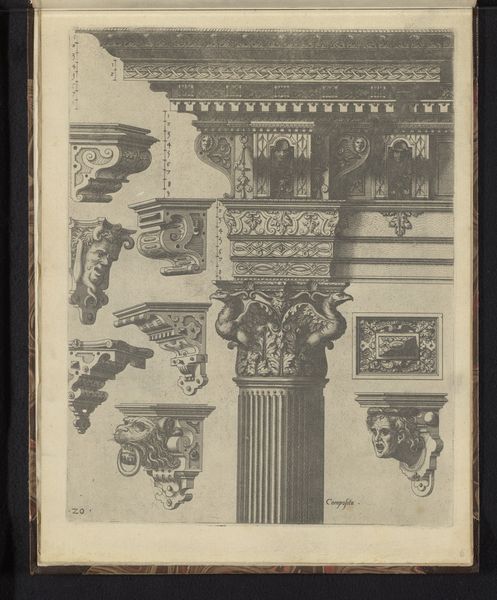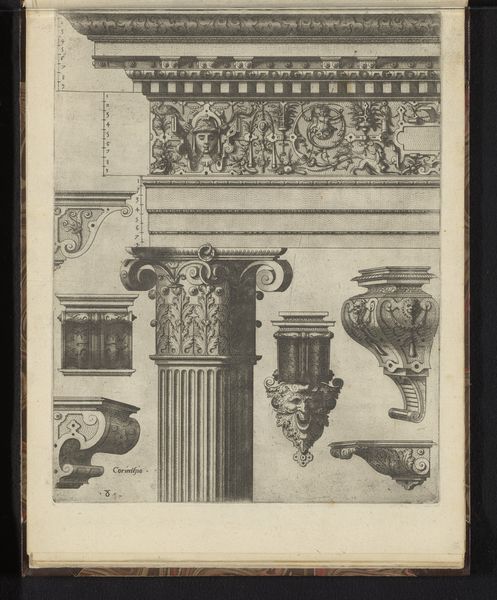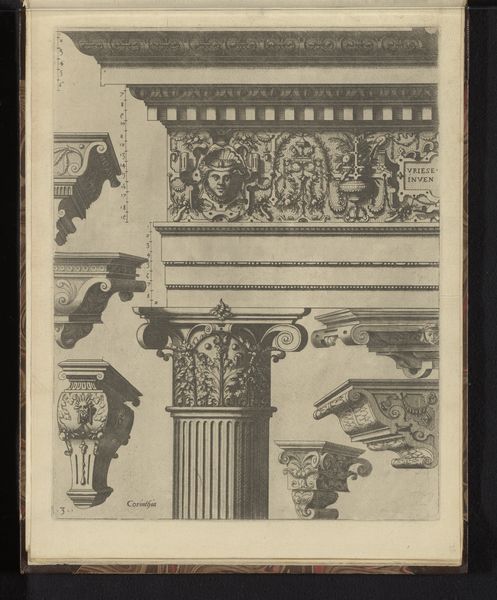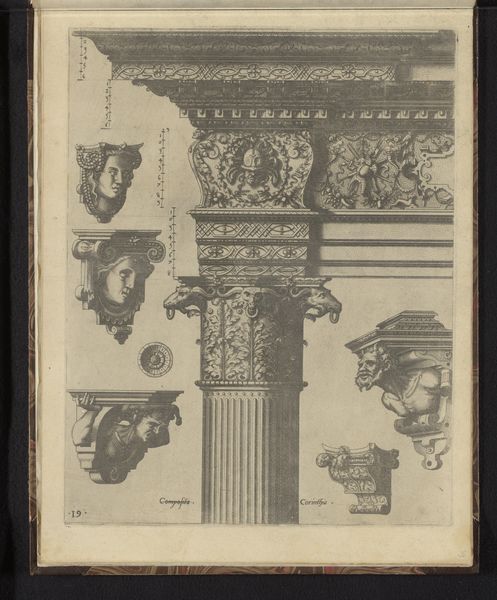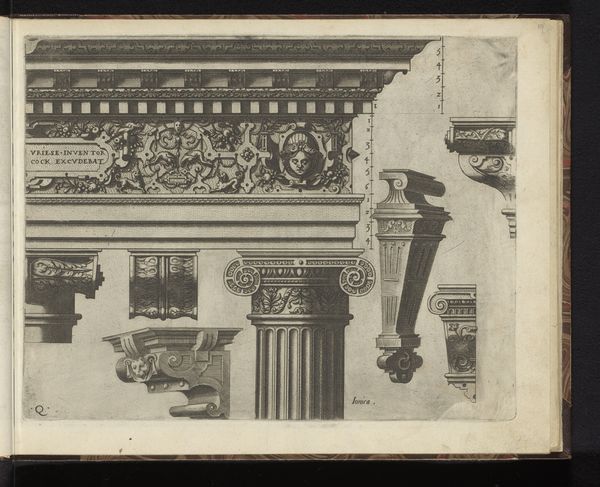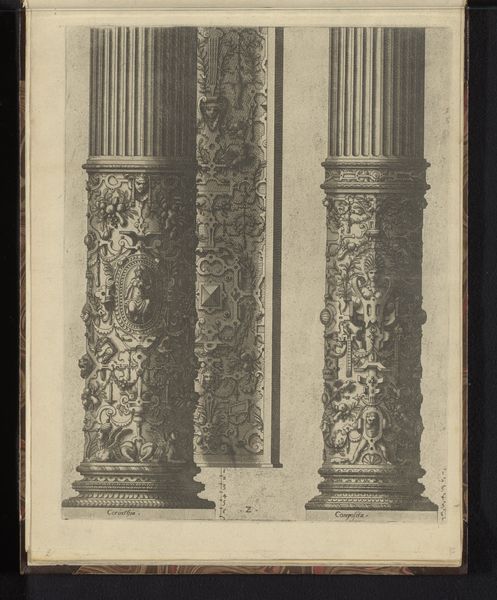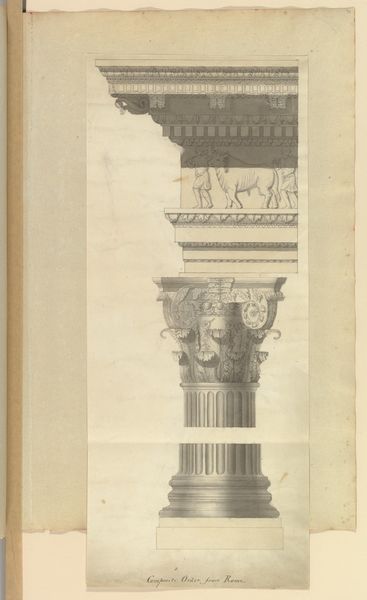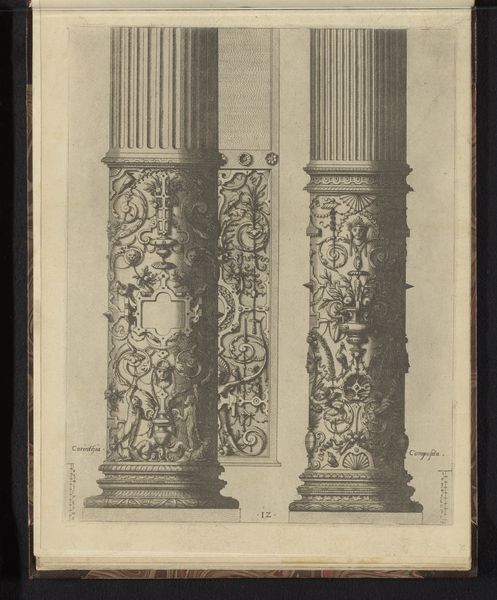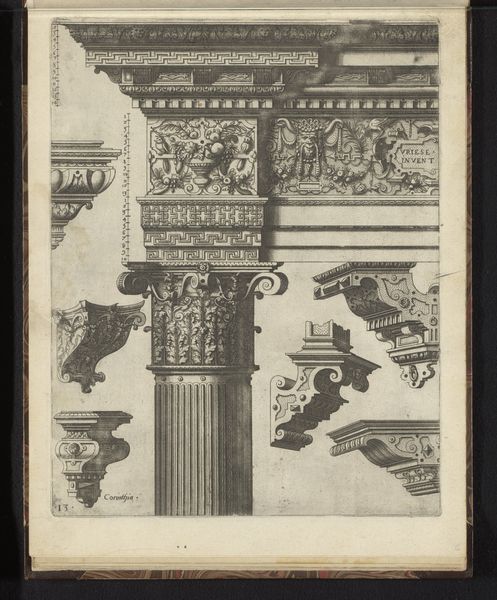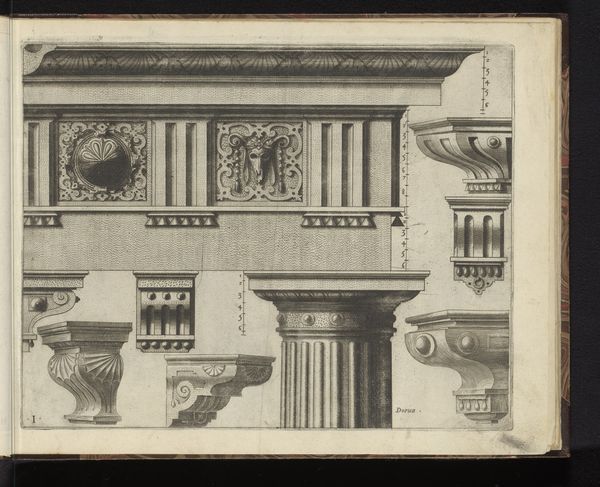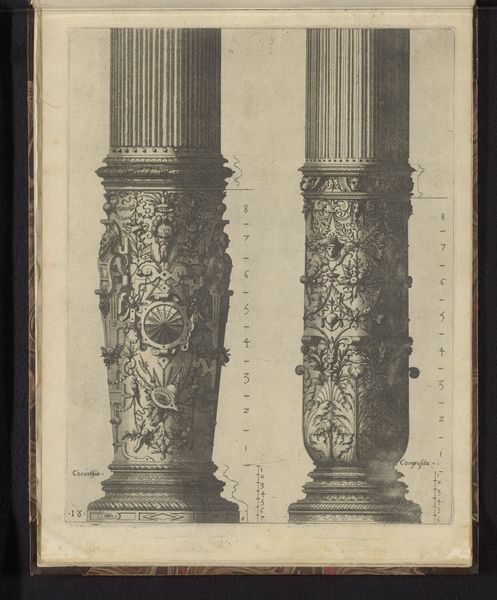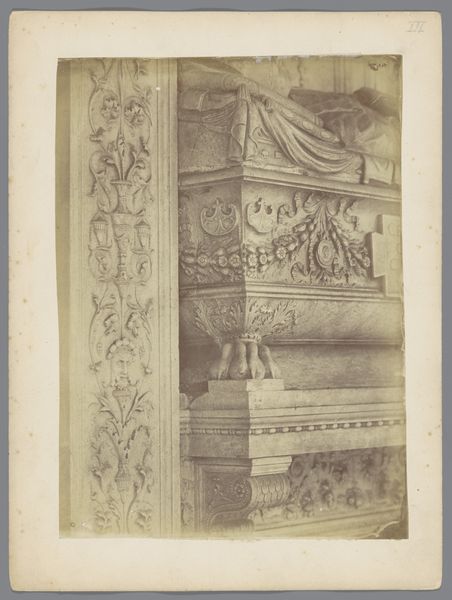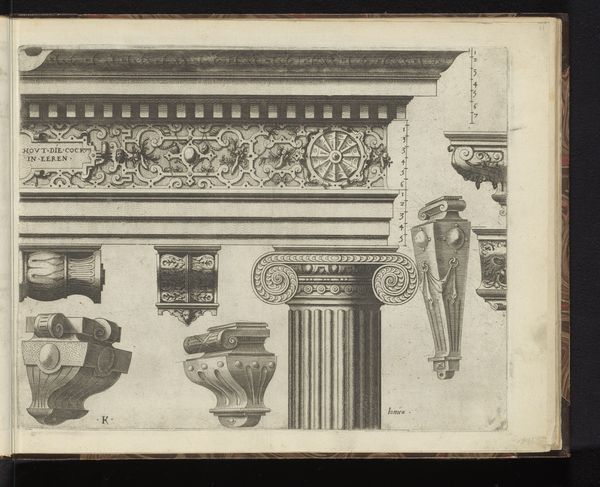
drawing, print, engraving, architecture
#
drawing
# print
#
form
#
11_renaissance
#
geometric
#
line
#
academic-art
#
engraving
#
architecture
Dimensions: height 302 mm, width 236 mm
Copyright: Rijks Museum: Open Domain
Curator: This detailed print, entitled "Composiet hoofdgestel en zes consoles," comes to us from the hand of Johannes or Lucas van Doetechum, dating back to 1565. It's currently held in the Rijksmuseum's collection. Editor: Immediately, what strikes me is the rigorous linearity. The crisp engraving style highlights an almost mathematical precision in the forms. It feels like a treatise on ideal form, more than a mere illustration. Curator: Precisely! Look closer at the interplay of form and function. This isn't just about aesthetics; it's about demonstrating the practical application of classical architectural elements. Engravings like this were crucial in disseminating architectural knowledge in the Renaissance, bridging the gap between design and construction. Consider the socio-economic context of the time; the rising merchant class demanded impressive buildings, and prints such as these democratized access to grand design. Editor: And what a demonstration of the possibilities inherent within those classical structures. Observe the almost relentless use of line. The visual harmony it achieves stems from a perfect balance, yet it teeters on the edge of being overly ornate. Is it celebrating restraint, or flaunting visual virtuosity? Curator: It reflects the economic investment put in. Consider the paper, the ink, the craftsman’s skill – all contribute to a visual rhetoric of opulence. The work acted as models and showed a certain prestige. This print wouldn't have been inexpensive to produce and buy; these things had implications for wealth distribution, and influence on who got to be the next commissioner. Editor: Your reading brings interesting elements to the work. But what do you see when focusing exclusively on the formal elements like its line quality, the balance achieved despite asymmetry, and the intricate interplay of light and shadow that define each architectural fragment. These forms predate any potential commissioner! Curator: And that is exactly my point! There must have been people involved in that stage too. Ultimately, these decisions rely on many players and all the decisions they represent: availability of paper, time of day, and who made that choice! Editor: Interesting reflection. It underscores how a single image can speak to multiple concerns depending on how we direct our gaze. Curator: Indeed, it's through considering these interconnections that we enrich our understanding of the piece's historical significance and lasting aesthetic impact.
Comments
No comments
Be the first to comment and join the conversation on the ultimate creative platform.
